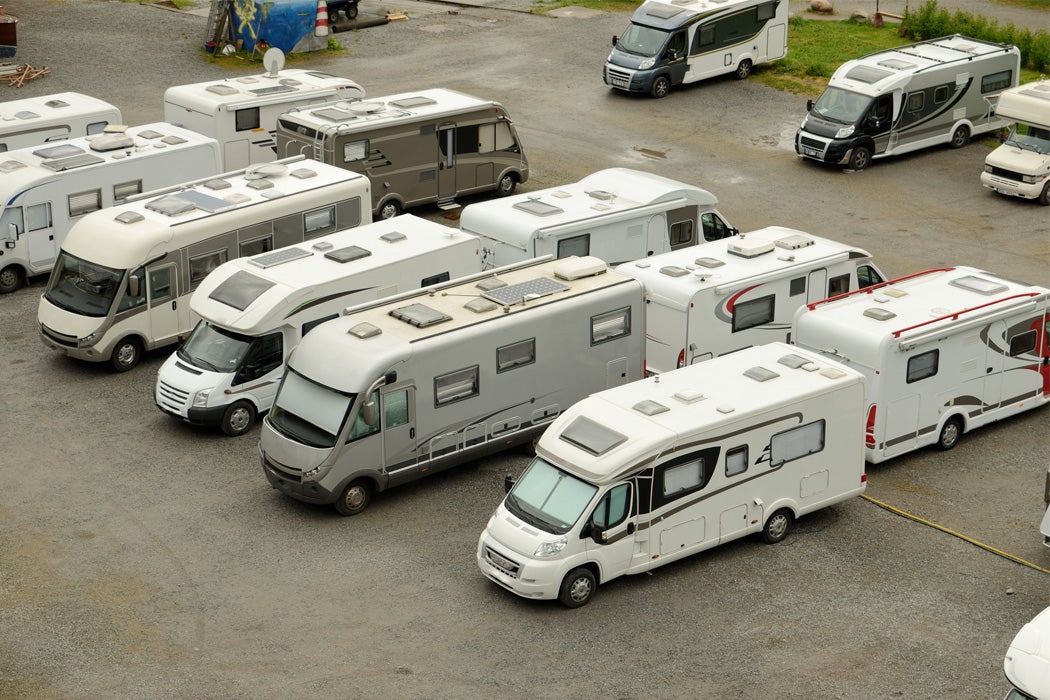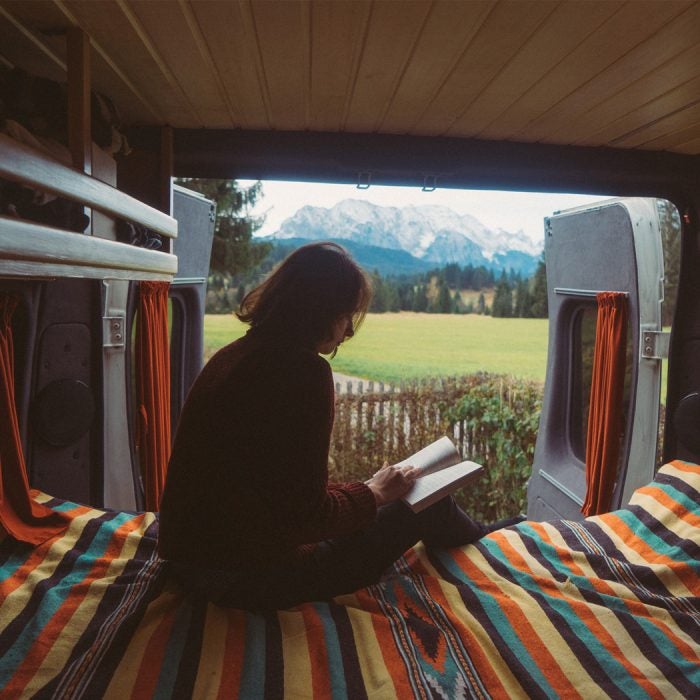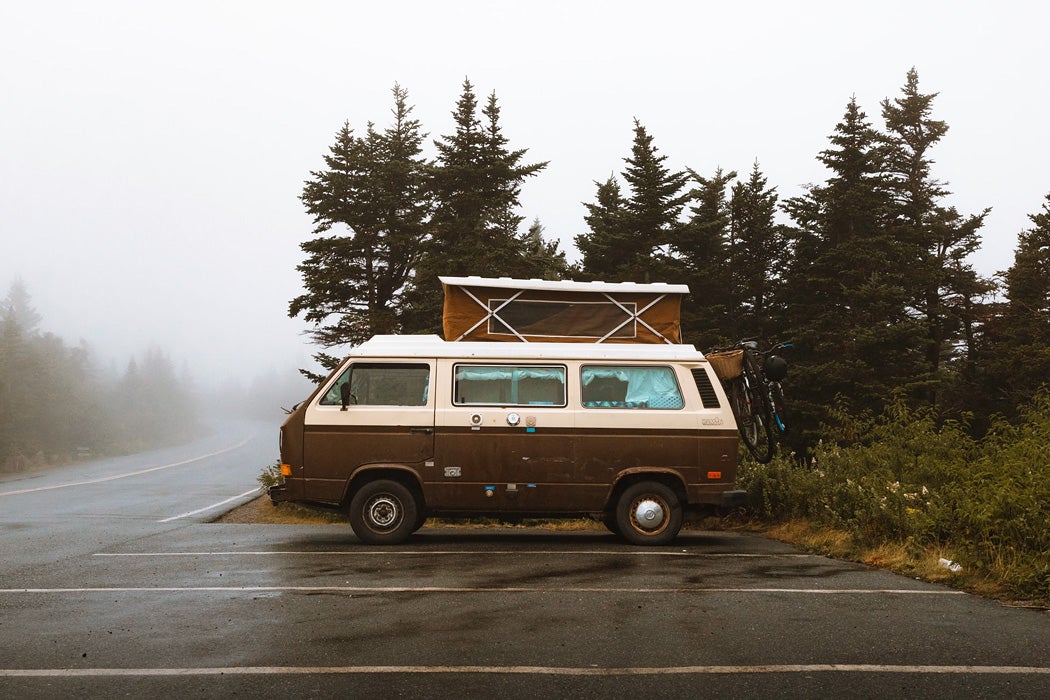In 2017, 40 million Americans packed their bags and moved house. Although this figure sounds high, it is only a fraction of what it was seventy years ago. In 1946, one in five Americans moved during the year; now that figure is more like one in nine.
The idea of the quest, of seeking reinvention, of escaping persecution or fleeing poverty has been the subject of essays and novels since Europeans began colonizing America. As far back as 1893, Frederick Jackson Turner penned his essay “The Significance of the Frontier in American History.” According to Turner, those heading West in search of land, freedom, and the promise of a better life were “restless” and full of “nervous energy.”
Twentieth Century American Restlessness
The fifty years between 1910 and 1960 saw the U.S.’s largest internal migration. Nine million Americans left the South in an effort to escape racial oppression, low wages, and crops devastated by the boll weevil. An article by the late historian Jack Temple Kirby in the Journal of Southern History points out that over a third of the entire population of the South migrated north and west during the “Southern Exodus.”
Weekly Newsletter
But migration has not always occurred out of a practical necessity. The historians Patricia Kelly Hall and Steven Ruggles, writing in the Journal of American History, make the case that migration can be interpreted as a signifier of American-ness. Their essay ‘“Restless in the Midst of Their Prosperity” takes its title from Alexis de Tocqueville’s Democracy in America (1835), an important early text that identified migration as being absolutely integral to the American character.
For many of us, the most vivid images of American migration were created between 1935 and 1943. Dusty barren landscapes, derelict homesteads, and the gaunt faces of laborers were captured by photographers—like Dorothea Lange, Gordon Parks, and Walker Evans—who were sent by Franklin D. Roosevelt to document migrant workers during the Great Depression. The mission of Roosevelt’s Farm Security Administration was to bring the country’s attention to “rural poverty, especially that of the most destitute portion of the farm population—people displaced by mechanization, drought, and the unintended consequences of the Agricultural Adjustment Act of 1933, which… forced many small farmers, renters, and share-croppers off the land,” as the photographer and scholar David Wharton wrote in the New Encyclopedia of Southern Culture.
Literary Views of Migration
Like the photographers of the Farm Security Administration, John Steinbeck created an equally enduring portrait of Depression-era migration with his novel The Grapes of Wrath (1939). Via the fictional Joad family, who travelled to California from Oklahoma’s Dust Bowl in search of work, Steinbeck portrayed the gruelling reality of itinerant laborers—and the fragility of their hardscrabble existence. The book became, according to one critic, “a cultural phenomenon of important dimensions.” So important, in fact, that The Grapes of Wrath was banned in Kern County, California—the Joads’ final destination.
For Depression-era migrants, wandering was a way of seeking better fortune. For the Beat generation of the 1950s and 60s, however, wandering took on a spiritual dimension, as artists like Allen Ginsberg and Gary Snyder saw themselves as seekers of truth. The movement’s most famous incarnation, Jack Kerouac’s On The Road (1957), “transformed a time into a period,” writes the poet and scholar J. T. Bararese in The Sewanee Review. Kerouac’s novel “turned a particular national habit of mind—in our case, our American rootlessness—into an emblem of national consciousness.”
Five years after Kerouac’s On The Road, Steinbeck published his own iconic road book Travels with Charley: In Search of America (1962). Driving across the United States with his French poodle Charley, Steinbeck, using those familiar words, described the “restlessness and rootlessness” of his fellow Americans, as noted by the scholar Barbara Reitt in the Southwest Review.
Along with the artists and photographers, writers and visionaries, the subject of migration has been documented in government surveys. A year after the publication of Travels with Charley, the U.S. Census Bureau rolled out a questionnaire about the migration patterns of those living in the United States. What might seem odd to us today—at a time when real estate prices keep low- or middle-income earners out of cities like New York, San Francisco, or Seattle—is the fact that the 1963 survey was the first to mention housing as a reason for relocating. In the following decade Americans listed many more reasons for moving house: They were wealthier and more physically and economically mobile—and perhaps a bit more hopeful—than previous generations. People were moving not just because they had to, but because they wanted to.
Surveys from the 1970s saw the first mention of retirement as a reason for someone’s choice to move. While this might conjure images of suntanned retirees playing tennis or reading chunky novels by the pool, the reality today of those whose working lives have ended or are drawing to a close is far from this idyll. After the 2008 financial crisis, many Americans lost houses, jobs, health insurance, and pensions. Many over the age of sixty simply can’t afford to retire, leading to a new kind of nomad.
On CamperForce and #VanLife
The journalist Jessica Bruder book Nomadland: Surviving America in the Twenty-First Century (2017) takes a closer look at the new migratory demographic. Bruder follows retirees living in RVs, cars, and vans who are pulling ten-hour shifts in Amazon storage facilities and fulfillment centers. They move from one seasonal job to the next, most often as Amazon CamperForce employees—a job without age restrictions. The timing of the CamperForce program is telling: It began in 2008, just as evictions and foreclosures were spreading like wildfire across the country.

Bruder’s subjects describe the exhaustion, the physical demands of walking for miles on concrete floors, the toll of boredom, and repetitive strain injuries—all for fifteen dollars an hour. Yet many of these Amazon CamperForce workers, in what can only be described as making the best of a difficult situation, talk fondly of their nomadism: How it allows them a chance to see the country and provides a camaraderie with other working septuagenarians. According to Bruder, nearly one in five Americans over the age of sixty-five is working—almost double the number from 1986.
Alongside the CamperForce workers whose nomadic lives are the direct result of economic factors outside their control, another, younger demographic of nomads is emerging. These are the twenty- and thirty-somethings who have replaced the search for seasonal work with the act of transforming their lives into a year-round sellable product. Like so many contemporary social movements, the new digital nomadism has spawned an industry and a hashtag.
Enter #vanlife, a term first used by Foster Huntington, a designer who, in 2011, ditched his job in New York and moved into a 1987 Volkswagen Syncro. By documenting his surfer life on the coast of California, Huntington chalked up more than a million viewers on Instagram and coined another catchy hashtag: #homeiswhereyouparkit.
This is not the stuff of ten-hour day shifts in airless Amazon fulfillment centers, followed by evenings nursing bad knees. Nor is it an attempt to flee failed crops and starvation. It is the hashtag for an aspirational lifestyle centering yoga, steaming cups of coffee, campfires, cute dogs, acoustic guitars, and retro-tinted photos of vintage campervans parked on deserted beaches. A quick glance on Instagram will take you to variations of #vanlife. There is #breakawaytribe, #furryvanlifers, #thevannation, and dozens more.

In a 2017 article in the New Yorker, the journalist Rachel Monroe writes: “‘vanlife’ is… a one-word life-style signifier that has come to evoke a number of contemporary trends: a renewed interest in the American road trip, a culture of hippie-inflected outdoorsiness, and a life free from the tyranny of a nine-to-five office job.” The young couple profiled in her piece, Emily King and Corey Smith, have turned their wandering into a product, or what they call a “project,” and have given it a name: Where’s My Office Now? They fund their nomadic lifestyle with sponsorships: Their first one was for an automotive parts shop called GoWesty. In exchange for social media mentions, King and Smith get discounts on repairs for their van. Then came sponsorships from the water bottle company Hydro Flask, from Kettle Brand potato chips, from Clif Bars, from Synergy Organic Clothing, and from the tourism board of Saskatchewan, in Canada.
The Restless Uncertain Future
How different these digital nomads are from the Joad family—and from the itinerant laborers photographed by Lange in their threadbare cotton dresses, clutching their hungry children. The #vanlifers bring another element to migration: Choice. They aren’t forced to live in a van; they want to. They also add a somewhat postmodern twist by capitalizing on the very things that preyed on Depression-era migrant laborers: Their nomadism is not desperate, but romantic; their uncertainty is framed as freedom; and their unorthodox lifestyle is transformed into a marketable brand.
It is easy to be cynical about a life lived online and advertised with Instagram-worthy photos, but these new digital nomads are also dealing with an added existential threat: Climate uncertainty. At the heart of the new nomadism is a sense that a fluid and flexible life might be more able to withstand the coming storms, both environmental and economic.
Maybe, when all around us feels so unsettled, movement goes some way to quell the anxiety. Maybe with environmental issues becoming more of a presence in our lives, with job insecurity more prevalent, and sky-rocketing rents becoming the norm, the idea of staying in one place feels like something from a bygone era. Maybe chasing dollars, good weather, and dreams—whatever form they may take—will soon become more of a necessity than a choice. The reasons behind this American restlessness have changed over time, but one thing is certain: The rootless American is here to stay.







